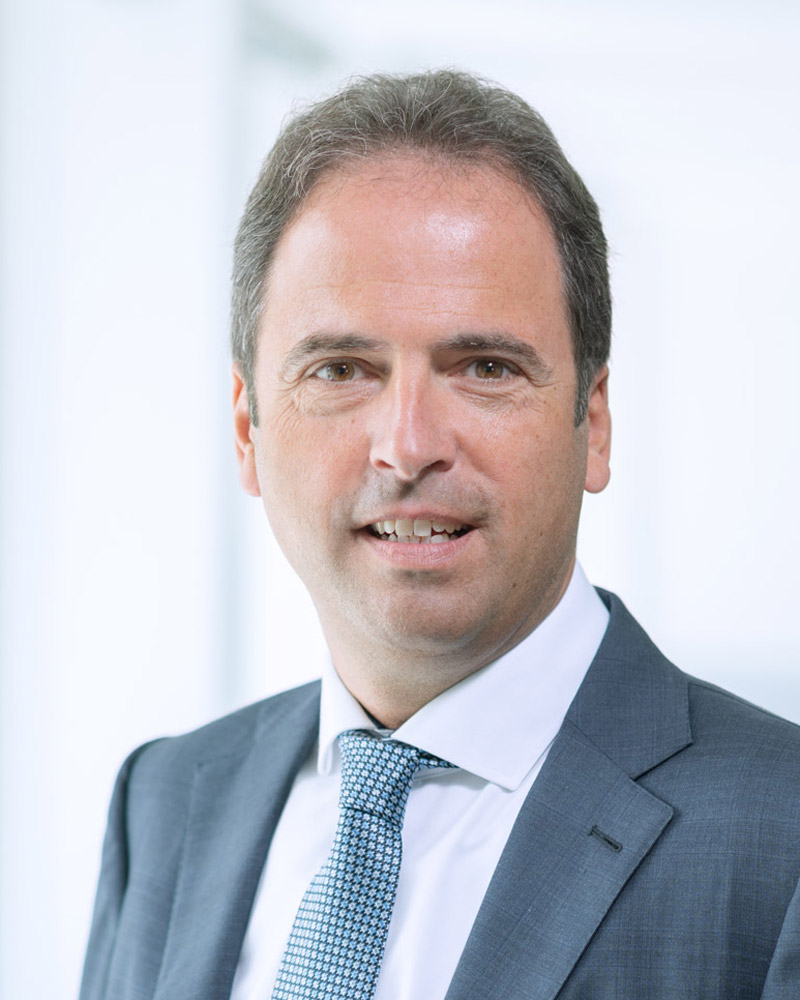4.2 Capital structure
Composition of share capital
At December 31st 2023, in CHF
| 22'000'000 registered shares of CHF 0.01 each | 220'000 |
| 12'600'000 bearer shares of CHF 0.05 each | 630'000 |
| Total ordinary share capital | 850'000 |
| Authorised additional share capital | none |
| Authorised contingent share capital | none |
| Participation certificates | none |
| Profit-sharing certificates | none |
| Registration and voting restrictions | none |
| Opting-out and opting-up provisions | none |
All shares are fully paid-up and – irrespective of their value – are entitled to vote and rank for dividend.
Information about changes in equity for 2023 and 2022 is presented in the statement of changes in equity in the Financial Report 2023 (page F09).
Changes in equity for 2022 and 2021 are shown in the statement of changes in equity in the Financial Report 2022 (page F09).
Convertible bonds and share options
As at December 31st 2023, Datwyler did not have any outstanding convertible bonds or options.
There are two ordinary bonds (Financial Report 2023, page F28, note 18, Bonds)
On 15 June 2022, a 2.1% CHF 240 million bond was placed. The bond is repayable on 15 June 2027.
On 30 May 2018, a 0.625% CHF 150 million bond was placed. The bond is repayable on 30 May 2024.
4.3 Internal organization
Role of the Board of Directors
The Board of Directors is the ultimate decision-making, management and governing body of Datwyler. The Board consists of no fewer than five and no more than eleven members. At 31 December 2021, the Board comprised eight Directors. The roles of the Chairman and Chief Executive Officer (CEO) are separate. The Directors or companies and organisations which they influence have no executive functions in the Group and do not have any business relationship with the Datwyler Group. The current Chairman, Paul Hälg, was the CEO of the Datwyler Group from 2004 to 2016.
The other members of the Board never served in executive functions for the Datwyler Group. No Director holds cross-directorships with other Directors through involvement in other listed companies. When members are appointed to the Board of Directors, care is taken to ensure that the kinds of competencies important to Datwyler with regard to the various industries, technologies and markets are suitably represented.
Directors are elected for one-year terms. They are eligible for re-election for further periods, with no limit on the number of terms they may serve. Directors retire at the Annual General Meeting following their 70th birthday. Each class of shares is entitled to nominate at least one representative to the Board. The average age of the Directors currently in office is 62 and their average tenure is 7 years.
Each member of the Board of Directors is subject to a periodic tenure review, usually every five years. This is prepared by the Nomination and Compensation Committee and discussed by the full Board.
Main responsibilities and operation of the Board
The Board organises itself. Its main responsibilities are defined in Art. 716a of the Swiss Code of Obligations. In order to discharge these responsibilities efficiently, the Board has authority under the Rules of Organisation and Business Conduct of Dätwyler Holding Inc. to appoint Committees from among its members to deal with specific matters. There are currently two Committees: the Audit Committee and the Nomination and Compensation Committee.
In accordance with the Rules of Organisation, the Board holds at least five regular meetings a year, each lasting between half a day and one full day. A two-day annual strategy workshop is held to review and develop the strategy. The strategy workshop is usually combined with a visit to one of the locations. Special Board meetings are held when necessary.
The Board has a quorum when at least a majority of its members is present. Its resolutions are passed by a majority of the members present. The Chairman is also a voting member and has the casting vote in the event of a tie. Resolutions may also be adopted by telephone conference or by circular letter. In 2023, the Board met in full for six meetings. The CEO and CFO and the other members of the Executive Management were present at each meeting for the discussion of items relating to them. In 2023, no external specialists were called in.
Meeting attendance 2023
| Paul Hälg | 6/6 |
| Hanspeter Fässler | 6/6 |
| Jens Breu | 6/6 |
| Claude Cornaz | 6/6 |
| Jürg Fedier | 6/6 |
| Martin Hirzel | 6/6 |
| Gabi Huber | 6/6 |
| Judith Van Walsum | 6/6 |
Agendas for Board meetings are set by the Chairman in consultation with the CEO and CFO. Any Director may request that an item be placed on the agenda or that a special meeting be held. The CFO acts as Secretary to the Board. Directors receive papers and information in good time in advance of meetings to allow them to prepare for discussion of each item.
Depending on the nature of the business to be transacted, the Chairman may invite members of the Executive Management to provide information at Board meetings and participate in an advisory capacity. The Board operates as a team and strives to reach decisions unanimously, wherever possible. If a unanimous decision cannot be reached, the minutes of the meeting must give the names of who voted and how they voted.
Once a year, usually at the end of the year, the Board of Directors carries out a self-assessment of its work and that of its committees. For this purpose, each member completes a standardized questionnaire covering topics such as strategy, discussion culture, organization of meetings, and competencies of the members. In addition, the Chairman conducts a separate structured discussion with each member on an annual basis. The evaluation of the questionnaires and the findings from the individual discussions are reviewed by the Board. Any potential for improvement is recorded and implemented in the following business year. In addition to the annual self-evaluation, a "private meeting" is usually held at the end of each board meeting without the participation of management representatives. The purpose of this meeting is, among other things, to assess the discussions and decision-making at the meeting and to draw any lessons from them.
Operation of the Committees
The Committees have written terms of reference specifying their responsibilities. In addition to these written terms, the Audit Committee has defined its tasks and responsibilities in a detailed checklist. The Committees generally prepare the groundwork for decision-making by the full Board. They meet at the call of their chairmen as often as necessary to discharge their duties, but at least once a year. Their meetings usually last half a day. All Directors, Executive Management members and the external auditors may request a meeting of the Committees. Depending on the nature of the business to be transacted, meetings are attended by the CEO, CFO or, if required, a representative of the external auditors or a specialist in an advisory capacity.
The agendas for Committee meetings are set by the respective chairmen in agreement with the CEO and CFO. Committee members receive papers and information in advance of meetings to allow them to prepare for discussion of each item. At least two members must be present to constitute a quorum. The Committees pass their resolutions by an absolute majority of the votes cast. In the event of a tie, the chairman has the casting vote. The Committees keep a record of their decisions and recommendations in minutes submitted to the Board and report the results of their activities at the next Board meeting.
Audit Committee
The Audit Committee consists of at least three Directors, each of whom has experience in finance and accounting, who are appointed by the Board from among its members for a period of one year. The Audit Committee appoints its chairman. Members of the Audit Committee are: Jürg Fedier (Chairman), Gabi Huber, Martin Hirzel (public shareholders‘ representative) and Judith van Walsum (public shareholders‘ representative). In 2023, the Audit Committee held four meetings , each of which was attended by the CEO and CFO.
The reporting of the internal audit is a standard agenda item at the meetings of the Audit Committee. The representatives of the external auditors attended all the meetings for the discussion of selected items. In 2023, other external specialists were not called in.
Responsibilities of the Audit Committee:
To ensure a comprehensive and effective audit programme for Dätwyler Holding Inc. and the Datwyler Group.
To comment on the annual and consolidated financial statements.
To comment on the audit plan and results of audits.
To receive recommendations from the external auditors, discuss the recommendations with the Executive Management and provide a summary for the Board of Directors.
To present the Executive Management's proposal for the appointment of Dätwyler Holding Inc.'s external auditors to the Board of Directors for consideration by the Annual General Meeting of Shareholders.
Meeting attendance 2023
| Jürg Fedier | 4/4 |
| Gabi Huber | 4/4 |
| Martin Hirzel | 3/4 |
| Judith van Walsum1 | 3/3 |
Following the 2023 Annual General Meeting, the Board elected Judith van Walsum as an additional member of the Audit Committee.
Nomination and Compensation Committee
The responsibilities of the Nomination and Compensation Committee are recorded in the Remuneration Report.
Division of responsibilities between the Board of Directors and Executive Management
The authority and responsibilities delegated to the Board of Directors and Executive Management are laid down in the “Rules of Organisation” as provided in Article 20 of the Articles of Association of Dätwyler Holding Inc. These rules are updated on a regular basis. They describe the duties and responsibilities of the Board of Directors and define the duties and responsibilities of the Executive Management, presided over by the CEO. In addition to the non- delegable functions reserved for the Board of Directors by law, the Rules of Organisation delegate the following duties, among others, to the Board:
To determine the principles of corporate strategy.
To make decisions on financial policy.
To adopt resolutions on the establishment of new business units and discontinuation of existing ones.
To adopt resolutions on the setting up of new sites and closure of existing ones.
To adopt resolutions on the acquisition and disposal
of equity holdings.
To adopt resolutions on the acquisition, encumbrance and disposal of land and buildings.
To review the risk management system.
As a rule, the Board of Directors approves major projects it deems expedient together with the rolling forecast. For urgent capital expenditures not included in the budget, levels of authority are defined and a return on investment analysis must be prepared. Capital expenditures exceeding CHF 3 million must be approved by the full Board of Directors.
The policies set out in the “Rules of Organisation” are detailed for all business and functional areas in the following written documents: “Division of Responsibilities of the Executive Management” and “Investment Manual”. Datwyler operates a systematically decentralised management system within a clear framework. The Group fosters an entrepreneurial culture where decisions are taken at the lowest possible level close to the market and customers.
Information and control systems for monitoring the Executive Management
The Board has an internal control system in place to monitor and control the Executive Management. This is based on an institutionalised, annual management process cycle, of which the key elements available to the full Board of Directors are as follows:
Monthly report with a business area and Group consolidation: actual and forecast figures, including variance analyses and a written commentary by the business area managers on current developments and potential risks.
Interim and annual report.
Quarterly review and approval of the rolling forecast for 18 months and annual review and approval of the three-year medium-term plan.
Annual review and approval of the updated Group and business area strategies.
Uniform Group-wide management system with integrated risk evaluation for strategic projects.
Special reports on major items of capital expenditures, acquisitions and alliances.
Inclusion of Executive Management members at Board and Committee meetings.
In addition to these institutionalised information and control systems, the Chairman of the Board and CEO engage in regular dialogue regarding all important business. In addition, the CEO and CFO are required to inform the Chairman of the Board without delay of any important unusual events or developments.
Internal Audit
Internal Audit reports to the Audit Committee and is under the direct administrative line management of the CFO. Every year it draws up a risk-based audit plan, which is approved by the Audit Committee. The interval between audits of Group companies varies between two and five years, depending on the size and importance of the individual company. To optimise cooperation, the Head of Internal Audit meets regularly with the representatives of the external auditors. At their meetings they harmonise audit plans and audit priorities and exchange useful information.
Internal Audit verifies compliance with the division of responsibilities and monitors the internal control system, risk management and the efficiency of the structures and processes. The findings and recommendations of Internal Audit are recorded in written reports.
Following completion of the audit, the findings are reviewed and discussed with the local management. In coordination with Internal Audit, the local management defines specific corrective measures and a timetable for implementation. Business area management and local management each issue an opinion. The report (including the corrective measures, the timetable for implementation and the opinions) is sent to the line managers, the external auditors, Executive Management and the Audit Committee. The Head of Internal Audit presents the significant findings contained in the audit reports at the respective next meeting of the Audit Committee. Comments and suggestions of the Audit Committee and the external auditors are taken into consideration in planning and conducting audits. Internal Audit also ensures that all discrepancies raised by its audits are addressed within the prescribed period and submits a report on such matters to Executive Management and the Audit Committee.
4.4 Risk management and compliance
Risk Management
Datwyler is aware of the importance of systematic risk management for lasting corporate success. Final responsibility in assessing risks lies with the Board of Directors. The Head of Internal Audit is responsible for the Group-wide coordination of risk management. He is supported by risk officers in both business areas.
As part of an ongoing process to ensure business continuity, risks are continuously identified and assessed throughout the Group. An open exchange of views on opportunities and risks is encouraged at all levels of the company and is part of the corporate culture.
The management of each business area is responsible for significant risks and informs the Executive Management and the Board of Directors. The findings are recorded in a risk management software. The CFO and the Head of Internal Audit monitor the risk management process through active exchanges and quarterly meetings with the business areas. In particular, risks are regularly discussed at the meetings between the business area management and the Executive Management. These reviews ensure that uniform valuation approaches are applied and that similar risks are treated equally across the Group business areas. The consolidation of risks and the annual reporting to the Board of Directors are carried out by the Head of Internal Audit.
The company-wide risk management process is also supported by a Business Continuity Process (BCP), which has been in place at all production sites for almost 20 years. Business continuity planning establishes risk management processes and procedures that aim to prevent interruptions to mission-critical services, and reestablish full function to the organisation as quickly and smoothly as possible. The underlying business continuity plans consider various unpredictable events, such as natural disasters, fires, disease outbreaks, cyberattacks, and other external threats. The underlying risk management at the sites is based on ISO 31000 and integrates regular audits. The BCP process at the production sites includes key ESG risks such as climate change, framework conditions in the supply chain, and access to skilled labor.
Datwyler basically divides the risks recorded into four categories: Strategic risks, operational risks, financial risks and compliance risks. Strategic risks include risks relating to the industry and the market, external stakeholders, social and environmental developments, corporate governance and catastrophic events. Datwyler also regularly assesses and minimises the risks of criminal cyber attacks as part of its strategic risks.
For their part, operating risks include risks along the value chain, risks from investment activities and personnel and cultural risks. The financial risks category includes market risk, liquidity and credit risk, capital structure and compliance with tax and accounting regulations. Finally, compliance risks are defined as the risks arising from laws, regulations and other rules and regulations. This includes existing and new regulations on sustainability issues.
Risks are assessed on the basis of the probability of occurrence and the potential loss amount. Once the individual risks have been identified and assessed, it is the responsibility of the business area management to develop a series of measures to reduce the risk of occurrence and the loss potential for each risk. The implementation of these measures is monitored as part of the continuous risk management process and taken into account in the next risk evaluation.
Global sustainability risks such as climate change and other environmental, social and governance risks are assigned to the appropriate risk category based on their strategic, operational, financial or compliance impact, at Group level as well as at business areas and production site level.
More information about sustainability risk management is available in the sustainability report of this annual report.
Code of Conduct and whistleblower hotline
Datwyler’s ethically sound business practices are supported by its zero tolerance objectives. The Group works proactively to prevent cases of corruption or justified legal action against Group companies. This is based on the Code of Conduct and policies on anti-fraud and anti-money laundering. The Code of Conduct forms an integral part of every person’s employment contract, and every employee is expected to be familiar with its content and to report any circumstances that suggest a violation of the code. The points of contact for reporting are an employee’s direct line manager, the manager responsible, the personnel department responsible, or the Group Compliance Officer (currently the Group Chief Financial Officer). Datwyler had already been offering its global employees a whistleblower hotline for reporting code violations since 2009. A formal whistleblower policy in line with the requirements of the EU whistleblowing directive as well as national requirements formalizes the whistleblowing process.
Details of the whistleblower hotline are displayed at all sites, and this function is reviewed on a regular basis during internal audits. Whistleblower reports are forwarded directly to the internal audit department where each report is treated confidentially in accordance with the relevant data protection provisions and investigated conscientiously. Most reports do not stand up to detailed scrutiny or are resolved locally with the Group Compliance Officer acting as intermediary. In the reporting year, seven reports contained concrete information, although this did not necessarily indicate violations of the Code of Conduct. The reports also refer to local leadership problems that can be eliminated by improving processes or structures. Datwyler used the findings of these incidents to improve and further develop its processes and guidelines. To help promote ethically sound collaboration, Datwyler also offers its suppliers an email address for code of conduct issues, which is also managed by the Group’s internal audit department. No reports were made during the reporting year.
Compliance reporting process
Datwyler has a standardized compliance reporting process, available to management and employees on the company’s intranet. The management teams at individual subsidiaries are responsible for implementing the Code of Conduct and upholding various national laws and standards. All employees complete an online training course once a year with an integrated test on the Code of Conduct and compliance topics.
Additionally, the general managers of all subsidiaries annually formally confirm with the Group Compliance Officer (currently the Group Chief Financial Officer) that that all new employees have received a copy of the Code of Conduct and understand its principles; that any violations of the Code of Conduct have been reported; that the processes and procedures for ensuring compliance with the Code of Conduct are regularly reviewed and adapted; that they are aware of the main risks for their area of responsibility regarding «compliance and fraud»; and that they monitor these risks via suitable processes and checks. Based on the compliance reporting process, no complaints relating to anti-competitive conduct, or the forming of anti-competitive cartels or monopolies were filed against Datwyler in 2023 and no significant fines or non-monetary penalties for infringements of legal provisions were imposed. The confirmation of compliance from subsidiaries is evaluated for accuracy by the internal audit department as part of its inspection work.
4.5 Board of Directors and Executive Management
Members of the Board of Directors
The Directors of Dätwyler Holding Inc. are – with the exception of the representative of the public shareholders – also Directors of Pema Holding AG and Dätwyler Führungs AG. Pema Holding AG is the majority owner of Dätwyler Holding Inc. See substantial shareholders and shareholder structure.
Pursuant to Article 14 of the Dätwyler Holding Inc. Articles of Association, the number of activities members of the Board of Directors are permitted to perform in functions comparable to those of the Board of Directors, the Advisory Board and the Executive Board at other companies with a commercial purpose is restricted as follows: Four mandates in exchange-listed enterprises and ten mandates in unlisted enterprises.

Dr. Paul Hälg
1954, SwissChairman – term expires in 2024

Dr. Hanspeter Fässler
1956, SwissVice Chairman / Chairman of the Nomination and Compensation Committee – term expires in 2024

Jens Breu
1972, SwissDirector / Public shareholders‘ representative / Member of the Nomination and Compensation Committee – term expires in 2024

Claude R. Cornaz
1961, SwissDirector / Member of the Nomination and Compensation Committee – term expires in 2024

Jürg Fedier
1955, SwissDirector / Chairman of the Audit Committee – term expires in 2024

Martin Hirzel
1970, SwissDirector / Public shareholders‘ representative / Member of the Audit Committee – term expires in 2024

Dr. Gabi Huber
1956, SwissDirector / Member of the Audit Committee – term expires in 2024

Dr. Judith van Walsum
1964, DutchDirector / Public shareholders‘ representative / Member of the Audit Committee – term expires in 2024
Changes in the Board of Directors in the reporting year
There were no changes to the composition of the Board of Directors at the 2023 Annual General Meeting. All Directors were elected for a further term of office of one year.
Significant events after balance sheet date
At the 2024 Annual General Meeting, all existing Directors will be available for re-election. In addition, Dirk Lambrecht will be proposed for election as a Director. Dirk Lambrecht will step down from his function as Datwyler CEO on 31 March 2024 (ad hoc announcement dated 5 October 2023).
Members of the Executive Management
Pursuant to Article 19 of the Dätwyler Holding Inc. Articles of Association, the number of activities members of the Executive Management are permitted to perform in functions comparable to those of the Board of Directors or the Advisory Board at other companies with a commercial purpose is restricted as follows: Two mandates in exchange-listed enterprises and five mandates in unlisted enterprises.

Dirk Lambrecht
1960, German/SwissHead of Business Area Industrial Solutions / Chief Operating Officer (COO)

Walter Scherz
1977, SwissHead of Group Function Finance & Shared Services

Dirk Borghs
1963, BelgiumHead of Business Area Healthcare Solutions

Sabrina Gérard
1968, BelgiumHead of Group Function Sustainability and Operational Excellence

Dr. Frank Schön
1975, German/SwissHead of Group Function Technology & Innovation
Changes in the Executive Management in the reporting year
There have been no changes in the Executive Management in the reporting year 2023.
Significant events after balance sheet date
Dirk Lambrecht will step down from his function as CEO of Datwyler after seven years as of 31 March 2024. The Datwyler Board has appointed Volker Cwielong as his successor as of 1 April 2024 (ad hoc announcement dated 5 October 2023).
Management contracts
There are no management contracts with external individuals or companies to perform management tasks for the Datwyler Group.
4.8 Statutory auditors
KPMG was mandated to audit the consolidated financial statements at the Annual General Meeting 2018. The auditors are appointed by the Annual General Meeting of Shareholders for a period of one year. The lead auditor has been in charge since 2018. In accordance with the Swiss Code of Obligations, the normal rate of rotation for the auditor in charge is seven years. Some of the Group companies are audited by other audit firms.
Fees paid in 2023 to the
statutory and other auditors
In CHF
| Statutory auditors | Other auditors | |
|---|---|---|
Auditing services, total |
642'000 |
228'000 |
Additional services, total |
47'000 |
209'000 |
Tax consulting |
2'000 |
205'000 |
Legal consulting |
– |
4'000 |
Other services |
45'000 |
– |
Representatives of the statutory auditors attend all meetings of the Audit Committee for the discussion of certain items. Four meetings were held in 2023. At each meeting, the statutory auditors present a written report on the progress of their work. The core element of the auditors' reporting is the annual audit report with recommendations to the Audit Committee.
The supervisory body for the external statutory auditors is the overall Board of Directors. It conducts an annual evaluation of the statutory auditors. This is based on the following criteria:
Professional competence
Scope and quality of their written reports and verbal statements
Practicability of recommendations
Priority setting
Transparent and effective communication and coordination
Ability to meet deadlines
Independence
Fees
The members of the Board of Directors rely on the competencies and experience they have gained in similar roles with other companies, on the statutory auditors' reports as well as on the comments made by the Audit Committee. The responsibilities of the Audit Committee are defined in the chapter Internal organization.
4.9 Information policy
Datwyler maintains an open dialogue with all stakeholders. In the interests of shareholders, Datwyler especially fosters relationships with investors, banks and media representatives. Communication takes place through the Annual Report, Interim Report, Annual General Meeting and at least one press and analyst conference every year. Through press releases and on its website datwyler.com, Datwyler provides up-to-the-minute information on all important projects as required by the ad hoc publicity rules of SIX Swiss Exchange.
The ad hoc press releases are available in the archive on the website. On the website, interested persons can also register for the distribution list for the ad hoc announcements. Contact details as well as a financial calendar with the important dates are also available on the website. Official notices concerning Datwyler are published in the Swiss Official Gazette of Commerce. Notices and invitations to registered shareholders are made in writing.
Trading blackout periods
Datwyler has an insider trading policy that sets out, among other things, the general blackout periods for trading in Datwyler shares or other Datwyler securities during the preparation of the annual and half-year reports. The trading blackout periods apply to all employees who are involved in the preparation of the annual report and half-year report or who have access to the relevant figures or systems. Access to confidential information makes these employees insiders. In addition to the members of the Board of Directors and Executive Management, these are employees from the Finance, IT and Communications departments. The general trading blackout periods apply from 1 January to the date of publication of the annual report and from 1 July to the date of publication of the half-year report.
In the reporting year, the trading blackout periods therefore applied from 1 January 2023 to the morning of 8 February 2023 and from 1 July 2023 to the morning of 24 July 2023. The employees concerned are reminded twice a year by e-mail from the Chief Financial Officer of the legal basis, the general trading blackout periods and their duties as insiders. In the case of strategic projects that have the potential to significantly influence the Datwyler share price, the employees involved must sign a specific non-disclosure agreement including trading blackout periods. Failure to comply with the trading blackout periods has disciplinary consequences, up to and including dismissal. In principle, no exceptions to the trading blackout periods are granted.

